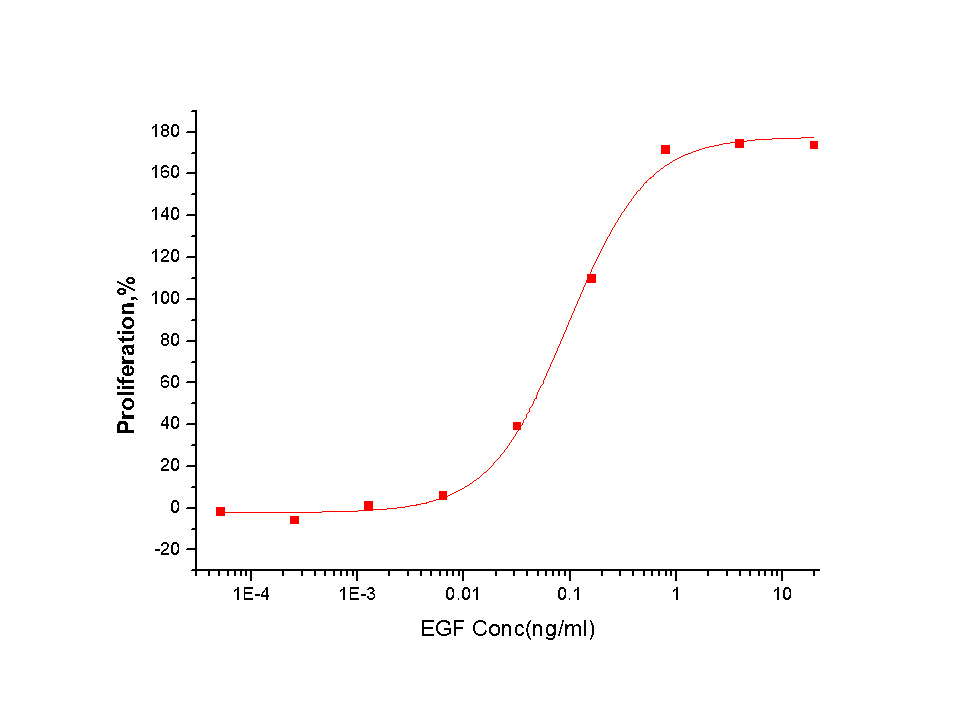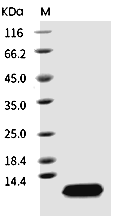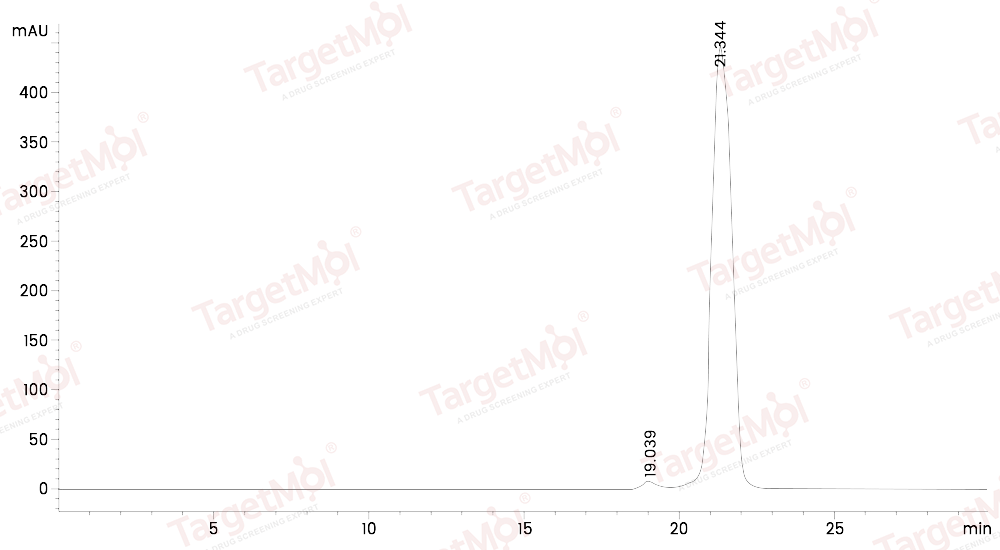Shopping Cart
Remove All Your shopping cart is currently empty
Your shopping cart is currently empty
EGF Protein, Human, Recombinant is expressed in E. coli expression system. The predicted molecular weight is 6.35 kDa and the accession number is P01133-1.

| Pack Size | Price | USA Warehouse | Global Warehouse | Quantity |
|---|---|---|---|---|
| 50 μg | $38 | - | In Stock | |
| 100 μg | $57 | In Stock | - |
| Biological Activity | 1.iPSC-derived human vascular organoids (Day 7) were cultured with FGF2 , VEGFA , EGF . Red arrows represent vascular organoids. Image taken at 10x magnification.(Routinely tested)
2.Measured in a cell proliferation assay using Balb/C 3T3 mouse embryonic fibroblasts. The ED50 for this effect is typically 0.02-0.2ng/ml.  |
| Description | EGF Protein, Human, Recombinant is expressed in E. coli expression system. The predicted molecular weight is 6.35 kDa and the accession number is P01133-1. |
| Species | Human |
| Expression System | E. coli |
| Tag | Tag Free |
| Accession Number | P01133-1 |
| Synonyms | URG,HOMG4,epidermal growth factor |
| Construction | A DNA sequence encoding the mature form of human EGF (NP_001954.2) (Asn971-Arg1023) was expressed and purified with an initial Met at the N-terminus. Predicted N terminal: Met |
| Protein Purity | ≥ 95 % as determined by SDS-PAGE. ≥ 95 % as determined by SEC-HPLC.   |
| Molecular Weight | 6.35 kDa (predicted); 6.35 kDa (reducing conditions) |
| Endotoxin | < 5 EU/mg of the protein. |
| Formulation | Lyophilized from a solution filtered through a 0.22 μm filter, containing PBS, pH 7.4. Typically, a mixture containing 5% to 8% trehalose, mannitol, and 0.01% Tween 80 is incorporated as a protective agent before lyophilization. |
| Reconstitution | A Certificate of Analysis (CoA) containing reconstitution instructions is included with the products. Please refer to the CoA for detailed information. |
| Stability & Storage | It is recommended to store recombinant proteins at -20°C to -80°C for future use. Lyophilized powders can be stably stored for over 12 months, while liquid products can be stored for 6-12 months at -80°C. For reconstituted protein solutions, the solution can be stored at -20°C to -80°C for at least 3 months. Please avoid multiple freeze-thaw cycles and store products in aliquots. |
| Shipping | In general, Lyophilized powders are shipping with blue ice. |
| Research Background | EGF is the founding member of the EGF-family of proteins. Members of this protein family have highly similar structural and functional characteristics. EGF contains 9 EGF-like domains and 9 LDL-receptor class B repeats. Human EGF is a 6045-Da protein with 53 amino acid residues and three intramolecular disulfide bonds. As a low-molecular-weight polypeptide, EGF was first purified from the mouse submandibular gland, but since then it was found in many human tissues including submandibular gland, parotid gland. It can also be found in human platelets, macrophages, urine, saliva, milk, and plasma. EGF is a growth factor that stimulates the growth of various epidermal and epithelial tissues in vivo and in vitro and of some fibroblasts in cell culture. It results in cellular proliferation, differentiation, and survival. Salivary EGF, which seems also regulated by dietary inorganic iodine, also plays an important physiological role in the maintenance of oro-esophageal and gastric tissue integrity. EGF acts by binding with high affinity to epidermal growth factor receptor on the cell surface and stimulating the intrinsic protein-tyrosine kinase activity of the receptor. The tyrosine kinase activity, in turn, initiates a signal transduction cascade that results in a variety of biochemical changes within the cell - a rise in intracellular calcium levels, increased glycolysis and protein synthesis, and increases in the expression of certain genes including the gene for EGFR - that ultimately lead to DNA synthesis and cell proliferation. |
| Size | Quantity | Unit Price | Amount | Operation |
|---|

Copyright © 2015-2025 TargetMol Chemicals Inc. All Rights Reserved.